Art & Exhibitions
Rembrandt and His Pupil Go Head-to-Head in a Major Vienna Museum Show
It's the first close look at the Dutch master and his relationship with his pupil and competitor Samuel van Hoogstraten.
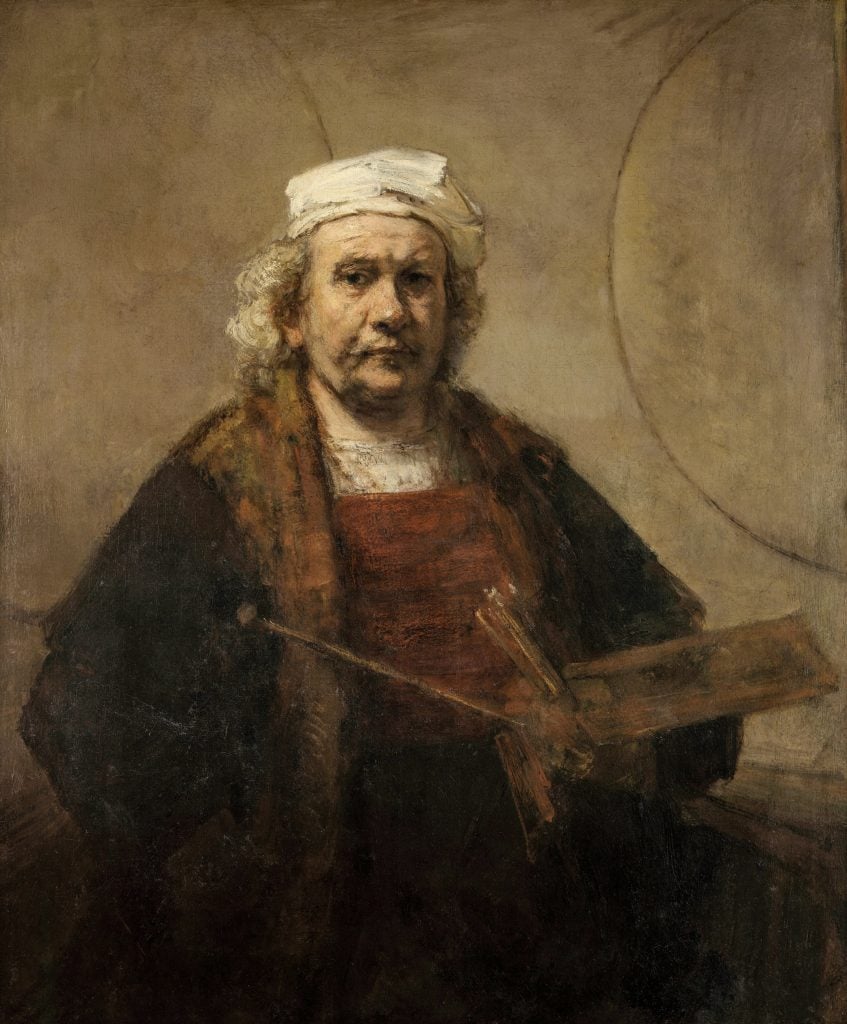
A new exhibition at the Kunsthistorisches Museum in Vienna offers viewers the rare chance to see the work of the Dutch master Rembrandt van Rijn in conversation with his student Samuel van Hoogstraten.
“Rembrandt – Hoogstraten: Color and Illusion,” which the museum is billing as the largest showing of Rembrandt’s major works ever to come to Austria, features over 60 paintings and drawings by the artists side by side. It not only considers the teacher-pupil relationship but also looks at these two painters’ work in a 21st-century context. The exhibition features loans from museums from across the globe, including the National Gallery in London, Amsterdam’s Rijksmuseum, the Louvre in Paris, and New York’s Metropolitan Museum of Art, among others.
The show illuminates Rembrandt’s legendary technique, which captures dramatic scenes through sumptuous use of light and darkness. Similar qualities also became a part of the work of Van Hoogstraten, who also experimented with perspective and is known as a painter of architecture.
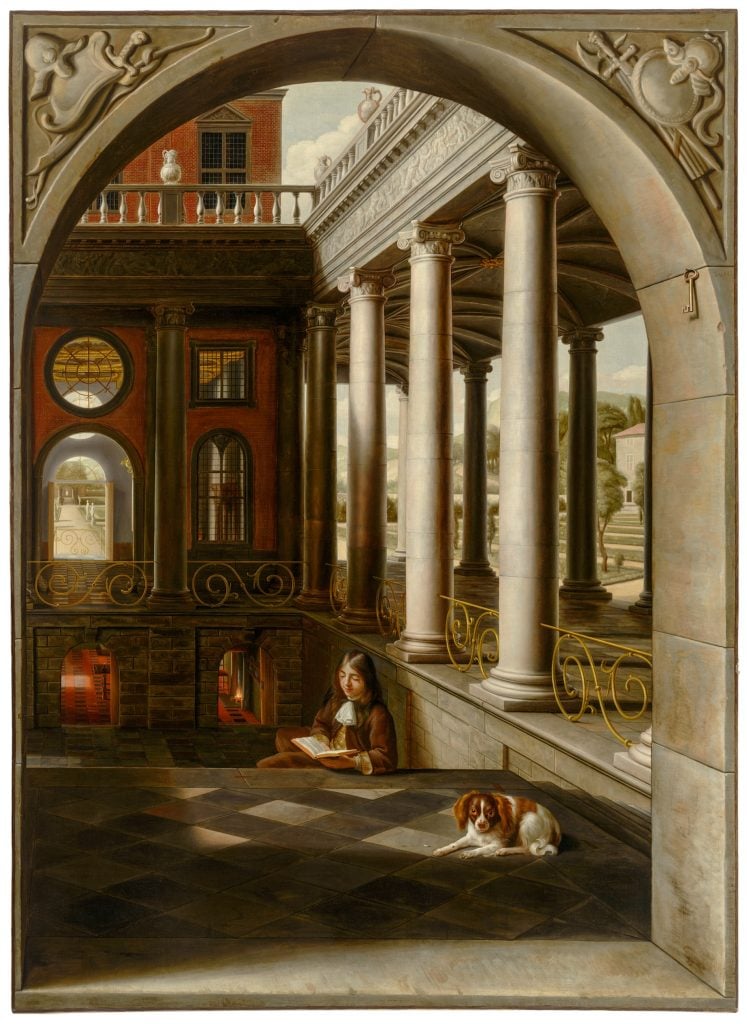
Samuel van Hoogstraten, Perspective View with a Young Man Reading in a Renaissance Palace (1662/67). © Dordrechts Museum. Photo: Bob Strik, Reprorek.
Van Hoogstraten’s 1632 painting Young Man Reading in a Renaissance Palace contains many of the hallmarks of his work. Within a trompe-l’oeil architectural frame, we see an impressive colonnade leading to a palatial home in the distance, as a young man studies a book in the middle ground, a faithful dog resting on the tiled floor nearby.
Rembrandt’s famous work Juno, painted between 1662-1665 and finished just four years before the artist’s death, is part of a series of female subjects the artist painted later in life. Here, the wife of Jupiter is depicted in an ornate dress with a crown and fur-trimmed cape. The use of shadows and darker colors helps to highlight the subject’s face and illuminate various details, including her jeweled brooch and scepter.
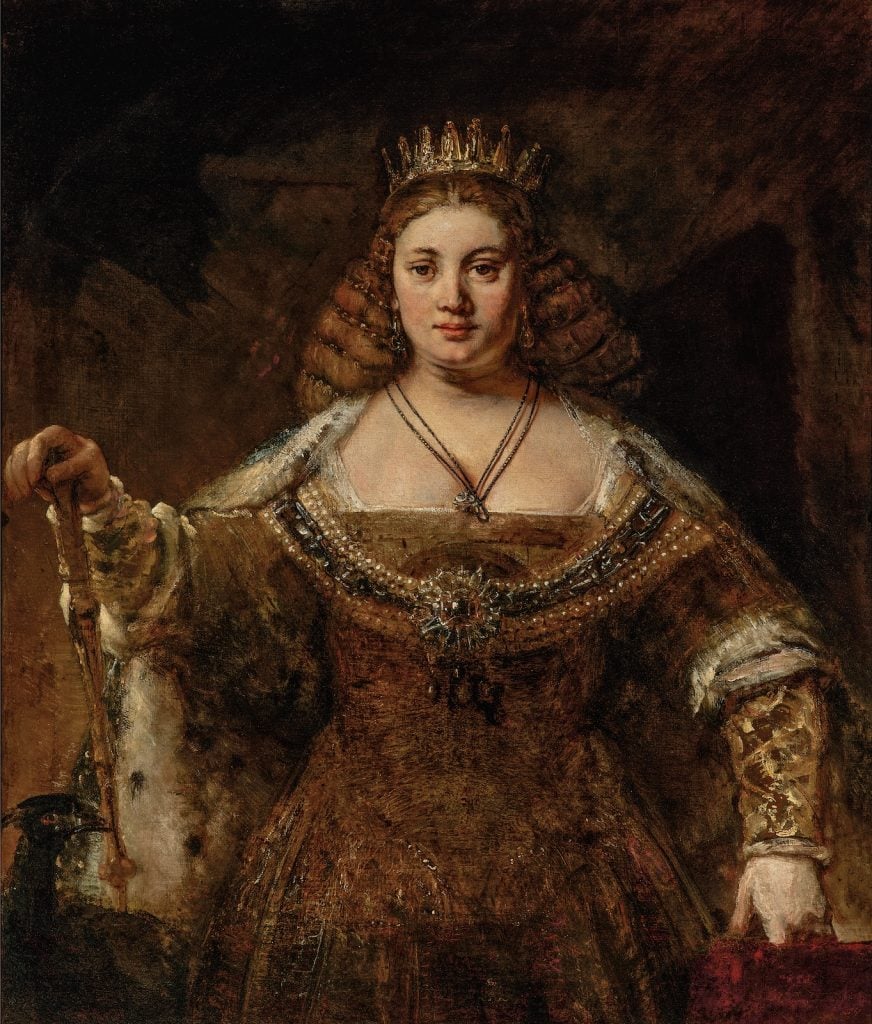
Rembrandt van Rijn, Juno (1662/65). © Hammer Museum, Los Angeles.
Another Van Hoogstraten standout is The Slippers (1650). Here, perspective is used again to give viewers an intimate look into a domestic space. A checkered floor gives way to a threshold on which rests a pair of slippers; in the room beyond, cleverly, a Dutch painting of an interior hangs, artwork-within-artwork.
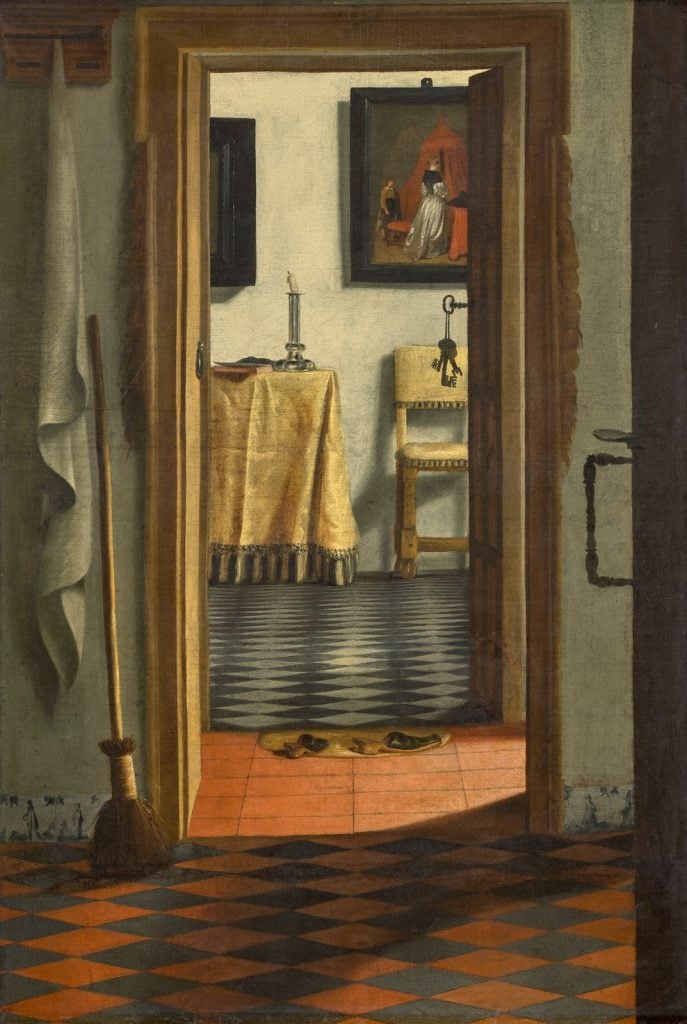
Samuel van Hoogstraten, The Slippers (1650/75). Photo © RMN-Grand Palais (musée du Louvre) / Michel Urtado.
Rembrandt’s 1665 painting Self-Portrait with Two Circles is one of the Baroque artist’s most moving and mysterious late works; he is renowned for his revealing works in this genre, which number about 40. The artist can be seen holding brushes and a palate in a shallow space; the work almost appears to be left unfinished.
Another factor setting Van Hoogstraten apart from his teacher and explored in this show is his use of perspective boxes. These small wood enclosures, produced in Amsterdam in the second half of the 17th century, allowed viewers to look through a peephole into a shallow painted interior that created an illusion of three-dimensionality. London’s National Gallery owns one by Van Hoogstraten; a replica was created for this show.
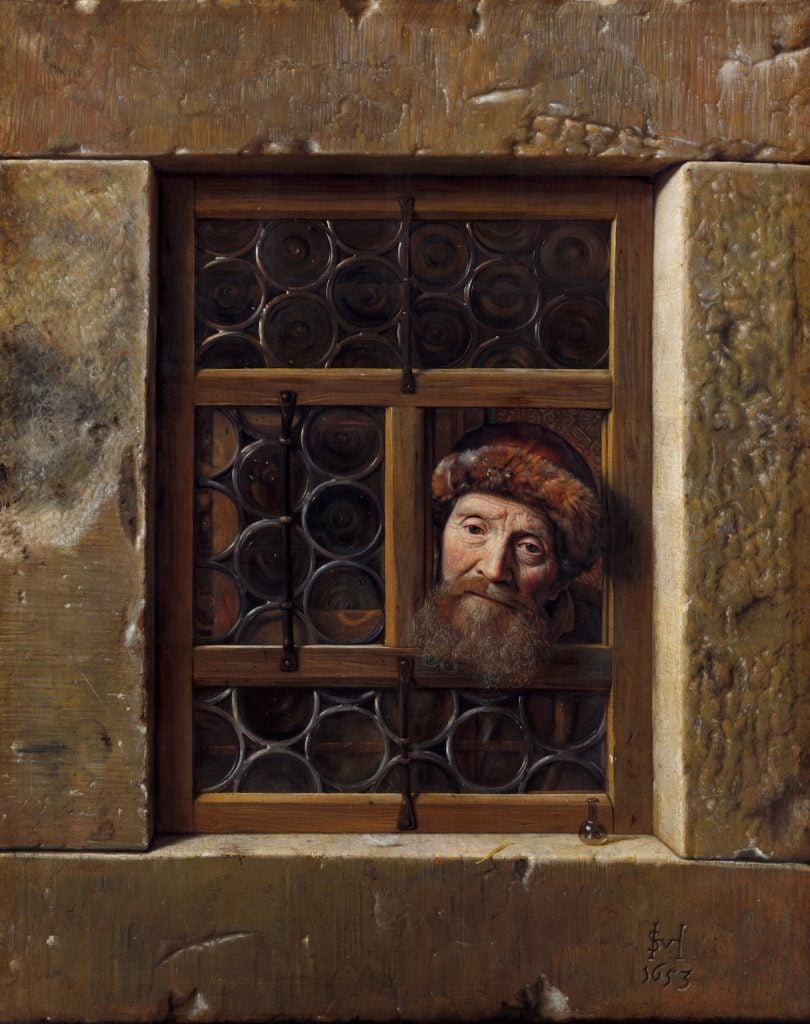
Samuel van Hoogstraten, Old Man at a Window (1653). © KHM-Museumsverband.
The exhibition also studies the two artists’ efforts at illusionism, including, for example, Rembrandt’s Girl in a Picture Frame and the younger artist’s Old Man at the Window and Feigned Letter-Rack Painting, which attempt to fool the eye and confuse the boundary between actual and painted space. In a 21st-century nod to these illusionistic moves, the show features interactive spaces and projections, too.
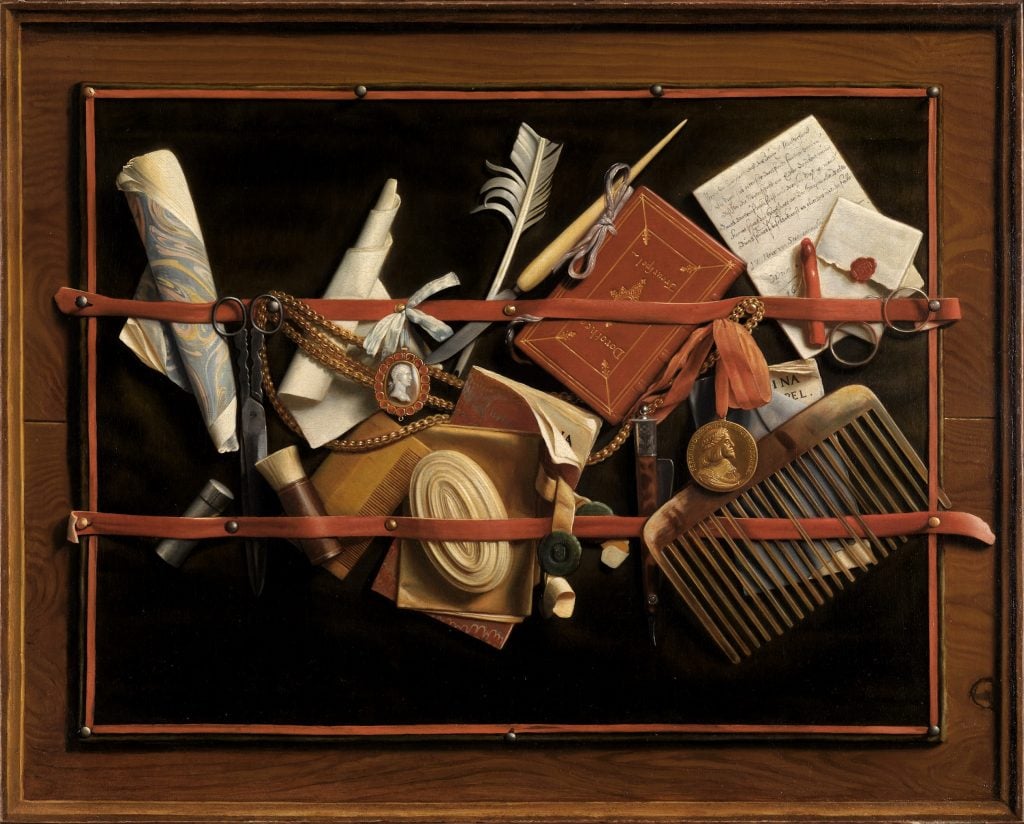
Samuel van Hoogstraten, Feigned Letter-Rack Painting. © Creative Commons, Staatliche Kunsthalle Karlsruhe.
“Rembrandt – Hoogstraten: Color and Illusion” will remain on view at the Kunsthistorisches Museum Vienna, Maria-Theresien Platz, through January 25th, 2025.





